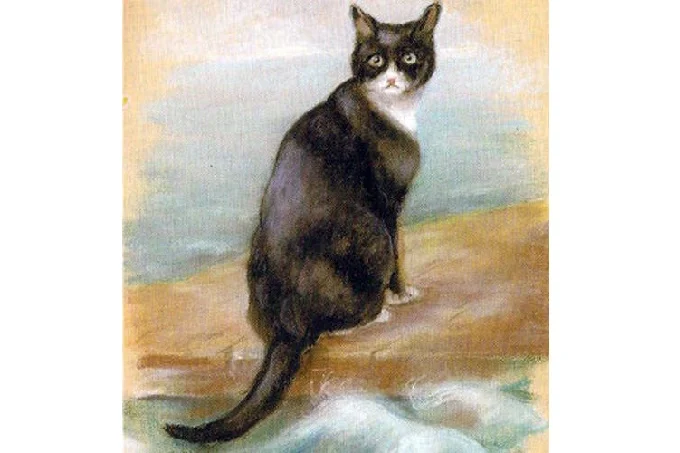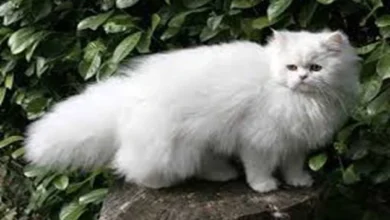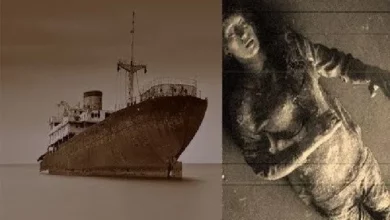Unsinkable Sam: Why do sailors consider ship cats as crew members

In past centuries, sailors often kept cats on ships. The striped mustaches were not on board as passengers – they could be safely called crew members. The fact is that cats improved the sailors’ mood, relieving stress, and protected the ship with its cargo and food from rodents. However, not only do these cats help the sailors.
Since the rodents who settled onboard often gnawed the cables, and with the advent of electricity – and wires, the cats also saved the crew from this scourge. They also prevented the spread of a number of infectious diseases transmitted by rodents – for example, the plague, which infects rats from fleas.
A cat on a ship is a good sign
In the old days, superstitious people in some countries believed that a black cat was bad luck. However, the sailors’ wives were of the opposite opinion! Often they kept such a cat at home, believing that, using her special abilities, she helped her husband survive at sea, sending him a charge of courage for many miles and protecting him from death in a storm.
If we talk not only about black cats but also about representatives of this family in general, the sailors considered it a good omen to meet a fluffy beauty on the deck. By the way, the cat needed to go through the entire deck from start to finish: if it covered only half of the way, and then turned around and left in the other direction, the omen, according to the sailors, did not work.
Moreover, according to legend, the cruel treatment of the ship’s cat promised her offender and the entire crew great misfortunes.
Back in the days of Vasco da Gama, cats and dogs were kept on Portuguese ships. For example, in 1503, the famous navigator wrote that when his crew ran out of food on the way, sailors had to kill and eat two cats and two dogs in order to survive.
The Spaniards also took the four-legged with them on board: data dating back to the 17th century. By the way, do not forget that domestic cats came to Europe, including by sea, along the shipping lines running along the Mediterranean Sea.
True friend
Otto Benecke’s book Hamburg Stories (1916) tells the story of a ship’s cat, who in 1736 saved the life of the pilot, Peter Bull, from Cuxhaven. The ship came across a sandbank at the mouth of the Elbe River near Neuwerk. The crew members considered that the pilot was to blame and decided to deal with him.
The captain managed to calm down the sailors, dissuading them from murder. However, when everyone began to transfer from the ship to the lifeboat, it turned out that there was no place for the pilot. According to maritime tradition, the captain is supposed to be the last to leave the ship, but the pilot was left in this case. He made the decision to trust the sea. The ship’s cat, which the sailors took with them into the boat, broke free at the last moment and jumped onto the ship. She climbed onto the pilot’s head and gripped his hair tightly.
A few hours later, Bull saw two men on a dam in the distance. He was exhausted and could not scream, but the cat began to meow loudly – and they heard her. This is how a faithful pet saved a person’s life. After his miraculous rescue, Peter Bull kept the cat for himself – she lived with him until his death.
Trim the cat went with the owner to prison
In the century before last, perhaps the most famous ship’s cat was Trim – a black handsome man with white paws, chest, and chin. He was born on a research ship and became a four-legged friend of the ship’s captain, scientist Matthew Flinders.
Later, the researcher even wrote a biographical “Tribute to the memory of Trim” (it was discovered after his death, in 1973, in the archives of the National Maritime Museum in Great Britain). The author writes that the cat Trim was distinguished by its ingenuity and playful character. He was the favorite of the whole team. While traveling off the coast of Australia, Trim also befriended the local Bangari, who was taken on board as an interpreter. The cat was also known as a skillful and merciless rat-catcher.
According to Flinders, Trim only felt comfortable at sea. But when Flinders brought him for a short while to the village, to the guest house, the cat organized a pogrom there, so he had to be taken back to the ship.
Once a research ship ran aground off the Reef, and the sailors had to wait for two months for the arrival of rescue ships. During this difficult period, Trim behaved like an exemplary pet. When Trim and his beloved master managed to arrive with a strange ship to the island of Mauritius, Flinders was put in a local prison on suspicion of espionage.
The cat remained in the cell together with the researcher, however, he now and then escaped into the wild. When it was decided to move the prisoners to another place, Flinders agreed to the persuasion of one woman to give her Trim, so that he would become a four-legged friend for her little daughter. Alas, two weeks later, the cat disappeared. It was not possible to find him. Flinders assumed that the gullible cat had been caught and eaten by some hungry local slave. There are several monuments to Trim in different cities.
Oscar! The Unsinkable Sam
The story of the cat Oscar has survived to this day. He originally lived on the German battleship, Bismarck. On May 27, 1941, the Bismarck was sunk during a three-day fight with the British Royal Navy. Only 114 of the ship’s passengers survived the sinking, one of them was Unsinkable Sam. In the following time, the pet survived several more shipwrecks, and each time it passed from one ship to another as a trophy. As a result, the cat was taken to England, where he lived his last years under his new name given to him by the sailors – Unsinkable Sam.
Another British battleship, the HMS Cossack, is said to have begun trying to rescue survivors of the stricken Bismarck in the open sea. The fortunate cat was noticed by crew members as it sought safety on a floating board. The cat was subsequently transported onboard the Cossack and given the name Oscar, which is also commonly spelled Oskar due to his German ancestry.
However, Cossack met its ultimate demise a few months later when it was destroyed by a German torpedo. Oscar was saved again by the crew of the aircraft carrier HMS Ark Royal. Oscar is claimed to have gotten his iconic moniker, “Unsinkable Sam,” while on board this ship.
And, as destiny would have it, that nickname would be confirmed once again when the Ark Royal was sunk on Nov. 14, 1941, almost a month after he was said to have been saved. The ship was sunk, but Unsinkable Sam escaped uninjured. The HMS Legion, another ship in the British Royal Navy’s fleet, supposedly saved him for the third time. Maybe Unsinkable Sam really did have nine lives to spare.
The HMS Cossack went down mere months after Unsinkable Sam was said to have been saved from his last disaster.
So, after surviving his third shipwreck, what happened to Unsinkable Sam? According to the Royal Museums Greenwich in the United Kingdom, the cat retired to land and was installed in the offices of the Governor of Gibraltar. He was eventually adopted by a sailor who resided in Belfast, and he died there in 1955.
However, the story of the cat who frequently averted death at sea, like other legendary legends, is riddled with holes. For one thing, there is no record of a cat being taken on board the Bismarck, at least according to the survivors. There’s also the matter of Oscar’s alleged appearance. Oscar is said to be represented by two separate pictures, both of which depict him as a black-and-white tuxedo cat. One is a pastel artwork by an anonymous artist showing a man sitting on a sliver of floating wood.
One theory for these anomalies in the tale of Unsinkable Sam is that the cat was a stowaway rather than an official animal mascot of the Bismarck, which would explain why the cat was not formally documented on the ship’s passenger list. There is no reason why the pastel drawing of Unsinkable Sam would have been produced if he did not really exist. However, they are just hypotheses and possibilities that cannot be verified. Although there are reasons to be dubious of Sam the Unsinkable Cat’s story, there are also reasons to accept it.
If a person cares about a four-legged friend, he will surely repay him with tenderness and devotion, being next to him in difficult times. However, rescuing cats in trouble, people sometimes do not think at all about some kind of reward. You just can’t stay on the sidelines when someone weaker than you needs help.




